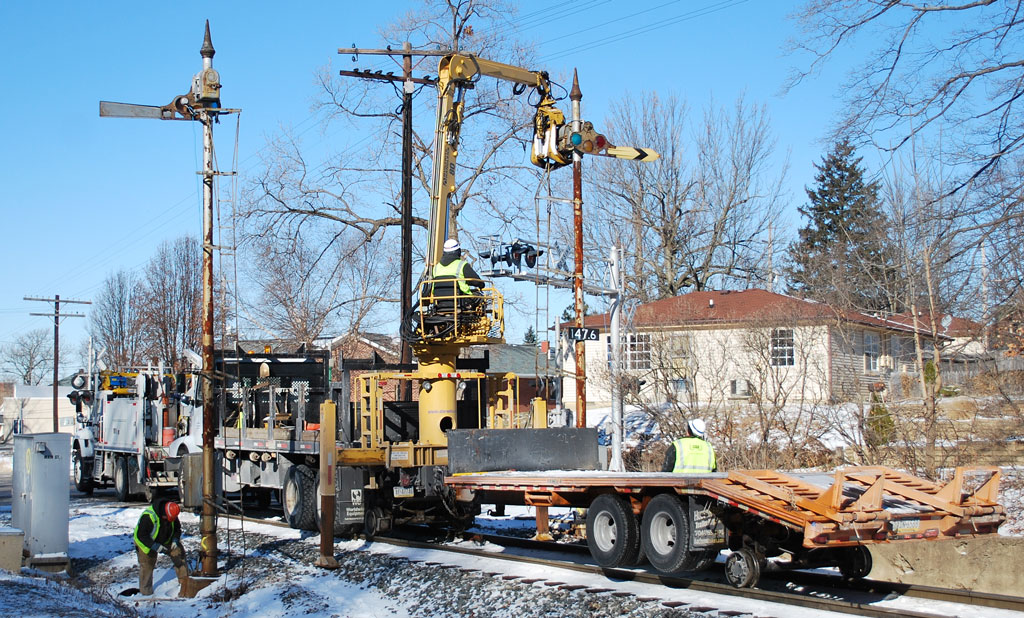The final “blade” to fall, located at milepost 147.1 at North Crawfordsville, came down Tuesday. CSX is replacing the historic signals as part of a signal modernization project. The semaphores take their code from lineside wires known as “pole line,” while the new system will send code through the rails, a more reliable system.
Semaphore signals use both colored lenses and an arm to give instructions to train crews. Nationwide, railroads have been replacing them with color light signals. Modern color light signals contain no moving parts, and thus are more reliable. The oldest blades on the Monon line dated to 1917.
Railroads continue to employ fixed semaphores at some interlockings nationwide. The only active system remaining on a revenue main line protects BNSF’s Lamy-Raton, N.M., route, which now hosts only Amtrak’s Southwest Chief.
The final “blade” to fall, located at milepost 147.1 at North Crawfordsville, came down Tuesday. CSX is replacing the historic signals as part of a signal modernization project. The semaphores take their code from lineside wires known as “pole line,” while the new system will send code through the rails, a more reliable system.
Semaphore signals use both colored lenses and an arm to give instructions to train crews. Nationwide, railroads have been replacing them with color light signals. Modern color light signals contain no moving parts, and thus are more reliable. The oldest blades on the Monon line dated to 1917.
Railroads continue to employ fixed semaphores at some interlockings nationwide. The only active system remaining on a revenue main line protects BNSF’s Lamy-Raton, N.M., route, which now hosts only Amtrak’s Southwest Chief.














